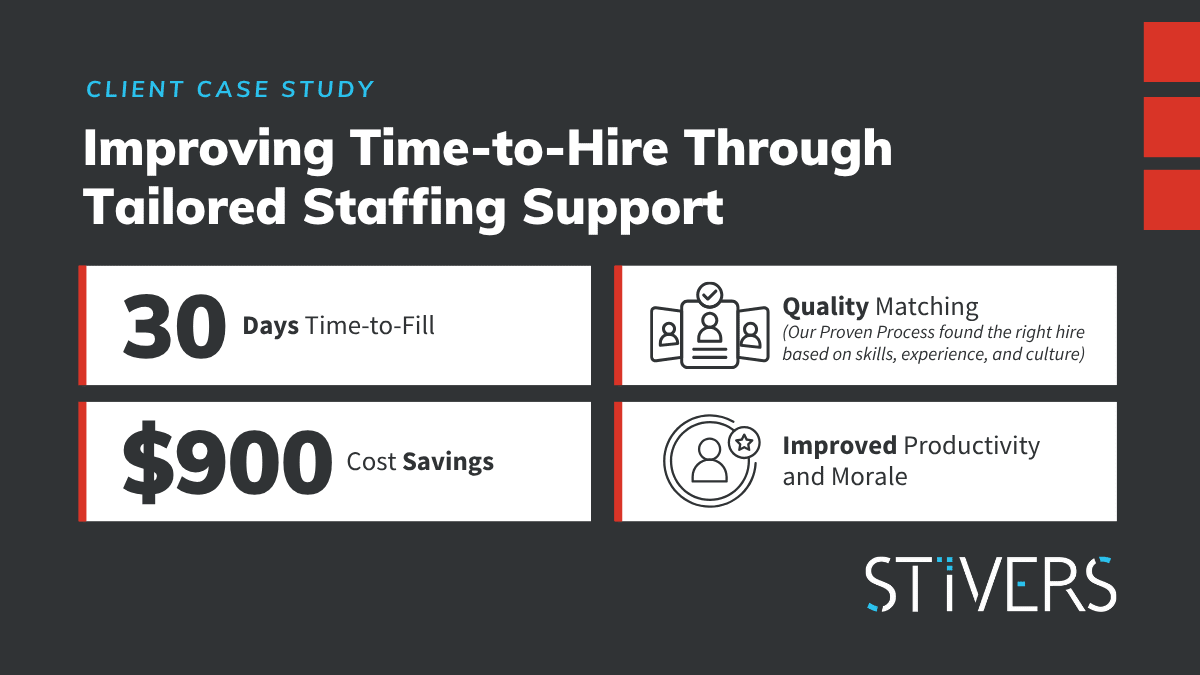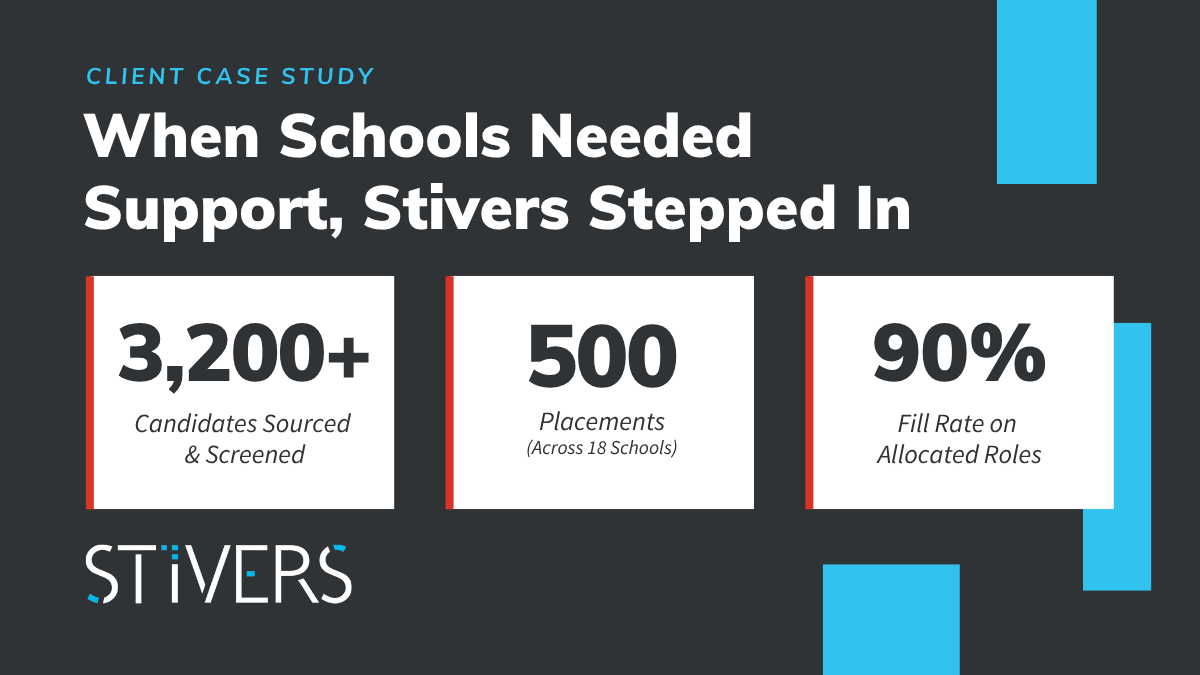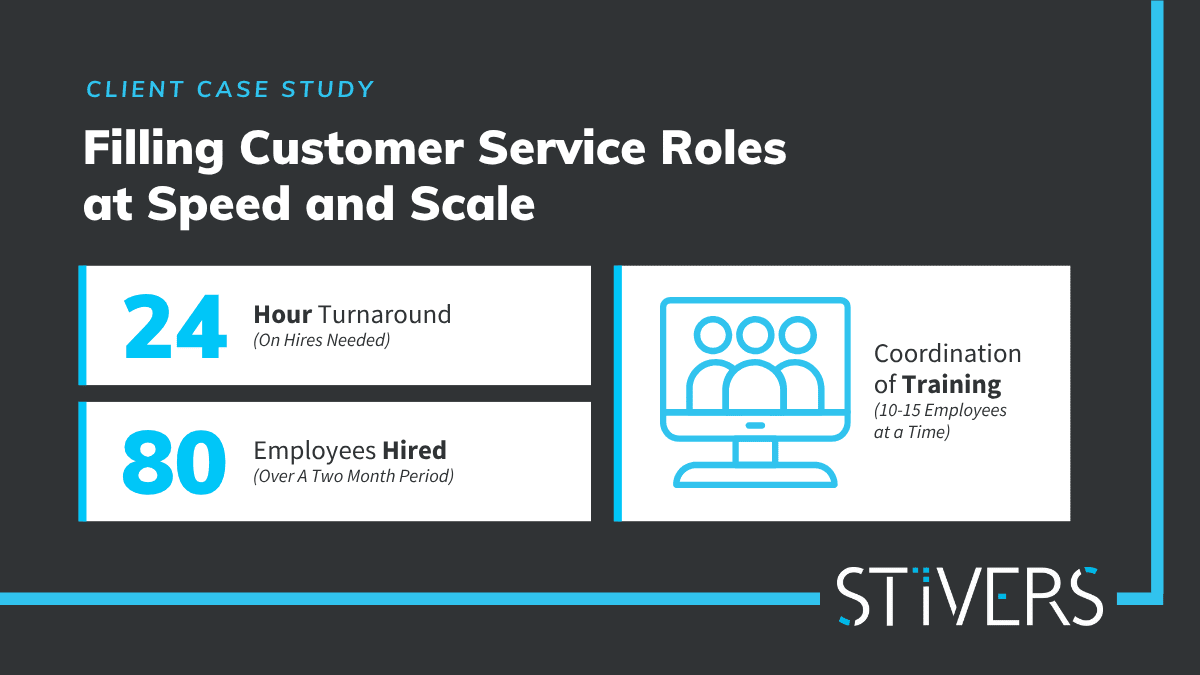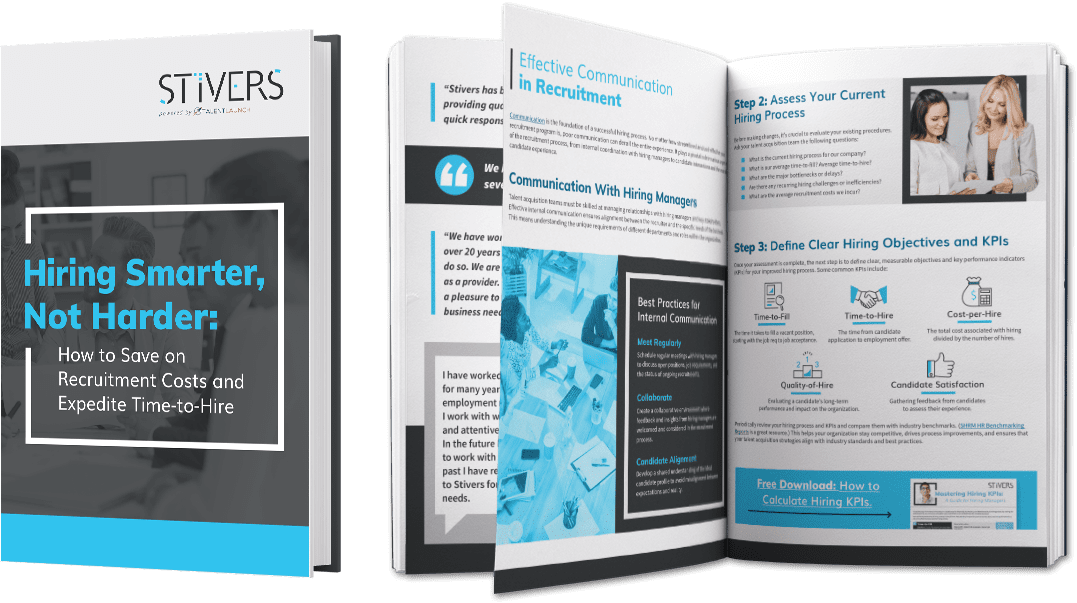Armed with knowledge about talent acquisition trends (and challenges) and establishing goals for a better hiring process, you’re ready to start taking action to streamline your staffing and recruitment.
The third installment in our Hiring Smarter, Not Harder series discusses how to achieve streamlined recruitment by:
- Eliminating hidden costs associated with in-house hiring
- Reducing time-to-hire, and
- Using the right sourcing strategies

Reduce Recruitment Costs
Hiring and recruitment is a costly investment. A study by Deloitte found that businesses spend an average of $4,000 to fill an open position. Despite the perception that internal hiring is cheaper, that’s not always the case.
Hiring an employee using in-house recruiting teams can cost you as much as 6-9 months of that employee’s salary.
Here’s a closer look at the financial aspects of hiring and recruitment, and how to reduce them.
Advertising Costs
- Job Boards: The cost of job postings varies by platform. On average, job postings on popular platforms like LinkedIn can range from $200 to $500 per job for a 30-day listing, while posting on Indeed can cost $100 to $250 per job.
To minimize these costs, consider strategic job posting, such as targeted job boards for specific industries or using social media platforms for free or low-cost job ads.
Important tip: Do your research on job board advertising best practices. You’ll see the biggest bang for your buck when you understand the ins and outs of job posting optimization and cadence.
- Employer Branding Initiatives: Investing in employer branding initiatives (such as content creation, social media presence, and employer review platforms) may require a budget.
However, these initiatives can have a long-term impact on reducing the need for paid job postings, as a strong employer brand can attract candidates organically.

Internal Hiring Costs
Consider the hours invested by your HR staff and the lost productivity due to being understaffed.
- Opportunity Cost: When you choose to fill a position using internal resources, you may be taking an employee away from their current role.
For example, if you have a team member earning an annual salary of $55,000 and they spend three months heavily recruiting for a position because of their expertise and understanding of the role, this could equate to roughly $13,750 in salary expenses, not to mention the productivity loss.
- Onboarding Costs: Regardless whether a role is filled by an internal or external candidate, there are always onboarding costs to consider: training materials, orientation, equipment, and time spent by managers and colleagues to bring the new employee up to speed.
And while internal hires may require less onboarding, there are still costs associated with integrating them into the new role.

Time-to-hire
Did you know on average it takes 42 days to find and hire one employee? Time is of the essence in today’s competitive job market, so it’s important to have a speedy time-to-hire.
Here are effective strategies that will help.
Leverage Technology
Modern technology is one of the talent acquisition trends that is here to stay. It can significantly streamline your hiring and recruitment processes and decrease time-to-hire.
- Applicant Tracking System (ATS): Implement an ATS to automate administrative tasks like collecting and scoring applicants, tracking candidates, and centralizing aggregate data. This is also a great way to leave notes to reference later if you correspond with candidates along the way.
- AI and Machine Learning: Artificial intelligence is changing the recruiting process for the better. Use AI tools for tasks like resume screening, candidate matching, and predictive analytics.
Incorporate automated messaging throughout the hiring process to keep the candidate warm and engaged (email or text). Chatbots also fall into this category, and can be used in several instances such as confirming the candidate’s application, scheduling interviews, answering FAQs, and more.
- Video Interviewing: Conduct initial interviews via video to save time and resources.
- Data-Driven Decision-Making: Encourage your team to utilize data and analytics in their decision-making processes. Data can provide valuable insights into the effectiveness of your recruitment strategies and help identify areas for improvement.

Craft Compelling Job Descriptions
Well-written job descriptions attract the right candidates and reduce the likelihood of unqualified applicants. A compelling job description should include:
- Salary Range: Arguably the most important piece of information. While pay transparency is becoming increasingly common (even required by law in certain states), there are still a healthy amount of organizations who don’t embrace this change.
Which begs the question: Why? BambooHR found that including a salary range in your job posting actually encourages candidates to apply.
Leaving out salary information can drive away exceptional candidates, as 60% won’t even apply if the information isn’t provided!
- Clarity: Ensure job descriptions are clear, concise, and transparent. What will be their main responsibilities? What additional projects might they be overseeing? What problems are they solving? Will they be leading a team?
- Optimization: Many job boards like Indeed and Google Jobs recommend using actual job titles rather than jargon-filled titles. If you’re hiring a Controller, don’t list it as a Spreadsheet Savant — that’s not what candidates are searching for.
This ensures that your ad will be served to more candidates.
- Inclusivity: Use inclusive language to appeal to a diverse range of candidates.
- Employer Branding: Why should a candidate want to work for you? Showcase your organization as a desirable place to work by highlighting its mission, culture, and opportunities for growth.

Structure Your Interview Process
A streamlined interview process not only improves consistency and fairness, but it also helps make sound hiring decisions.
Here are four key components of an effective interview process that lead to more reliable assessments and selection of the best-fit candidates for your organization.
- Shorten Your Interviews: With the amount of time it takes to hire a new employee reaching an all-time high, so is the mounting frustration it causes for candidates. Shorten the interview process whenever possible, making sure to only include key decision-makers.
- Standardized Questions: These questions should be carefully designed to elicit specific information about candidates’ skills, experience, and cultural fit. By asking every candidate the same set of questions, you create a level playing field for evaluation, making it easier to compare their responses objectively.
- Panel Interviews: Panel interviews involve multiple interviewers from different departments or teams within the organization. This approach is designed to reduce biases and provide a well-rounded evaluation of candidates.
The varied perspectives of panel members can reveal different aspects of a candidate’s suitability for the role, and it minimizes the impact of individual interviewer biases. Just be sure panel interviews don’t increase time-to-hire.
- Assessments: Assessment tools include skills assessments, job-related tests, and behavioral assessments. They provide a data-driven and objective way to evaluate a candidate’s suitability for the role, complementing the insights gathered through interviews.

Evaluate Candidates Efficiently
Effective evaluation involves a comprehensive approach that goes beyond technical skills assessment. You must also ensure a fair and unbiased evaluation.
Here are strategies for efficient candidate evaluation that can significantly impact your time-to-hire.
- Check Your Bias: Unconscious bias can manifest in various ways, such as favoring a candidate due to a shared alma mater or subconsciously showing less preference based on a candidate’s name.
To guarantee that candidates are evaluated solely on their qualifications and talents, consider implementing blind resume reviews during the pre-screening process.
- Structured Evaluation Forms: Create evaluation forms for interviewers to rate and comment on each candidate’s performance. Include sections for strengths, weaknesses, and overall fit for the role.
These forms standardize the evaluation process and provide a clear record of assessments.
- Reference Checks: Conduct thorough reference checks for final candidates, reaching out to previous employers and colleagues to gather insights about their work ethic, performance, and character.
For an extra layer of candidate insight, consider visiting their LinkedIn profile for endorsements and recommendations, which can offer a 360-degree view of their professional relationships and skills.
- Feedback Loops: To keep candidates and hiring managers well-informed and engaged, establish clear feedback processes. Feedback loops ensure that candidates receive timely updates about their progress, and allow hiring managers to stay in the know.
Effective communication is important throughout the evaluation phase, promoting transparency and enhancing the overall hiring experience.

Adopt Innovative Recruitment Sourcing Strategies
Identifying the right sources for talent can save precious time and help keep hiring costs in check. Encourage your team to think creatively and explore new recruitment and sourcing strategies.
This might involve experimenting with different sourcing channels, employer branding initiatives, or unconventional methods to attract top talent.
Sourcing Channels for Strategic Recruitment
Sure, there are your typical sourcing channels like your career website and social media channels. But there are also a variety of additional sources to tap into:
- Social Media Groups: Discover the potential of groups to reach specific candidates by their interests.
For example, search for “Accounting Professionals” in Facebook and you’ll likely find several niche communities where experienced accounting and finance talent connect. LinkedIn Groups boast multiple groups based on interests, organizations, industries, and more.
- Internal Talent Pool: Leverage your current employees. Who might be a great fit based on their experience, skillset, and growth goals?
- Employee Referrals: Incentivize employees to refer potential candidates from their networks, especially if you’ve identified a potential candidate that they’re connected with on LinkedIn.
- Online Job Boards: Utilize high-performing job boards like Indeed and CareerBuilder. There are also many niche and industry-specific websites to consider.
- Networking: A classic and evergreen recruiting source, attending industry events and conferences are a great way to connect with potential candidates.

Employer Branding Initiatives
Branding is an often overlooked component of innovative recruitment strategies. Building a strong, positive, and distinctive employer brand helps attract (and retain) top talent who align with your company culture and values.
By showcasing your organization as a desirable place to work, you can significantly reduce time-to-hire as candidates are more likely to be drawn to your opportunities organically.
- Invest In Your Employees’ Experience: Create an environment where employees feel valued, engaged, and motivated. This can include offering unique perks and benefits, promoting work-life balance, and fostering a culture of continuous learning and development.
When your current employees are advocates of your organization, they become the most convincing brand ambassadors.
- Employee Ambassador Programs: Encourage willing employees to share their experiences, behind-the-scenes pics, and insights on social media platforms like LinkedIn, X (formerly known as Twitter), and Glassdoor. Then share their content on official company channels.
- Content Marketing and Thought Leadership: Establish your company as an industry leader by consistently producing and sharing valuable content. This can include blog posts, whitepapers, webinars, and videos related to your industry, company culture, and workplace practices.
Thought leadership content not only attracts candidates who seek knowledge but also demonstrates your company’s expertise and commitment to growth.
Next Up: Effective Communication in Recruitment
Now, you have all the tools to create a streamlined staffing and recruitment process. In the next article of our Hiring Smarter, Not Harder blog series, you’ll learn how to ensure efficient and clear communication during your recruitment efforts.
Because no matter how streamlined and cost-effective your recruitment program is, poor communication can derail the entire experience.
Can’t wait? Get the complete guide!
